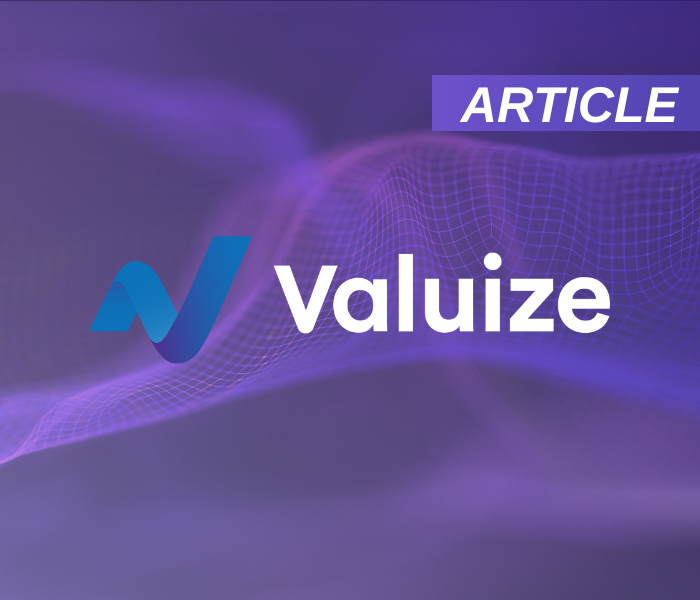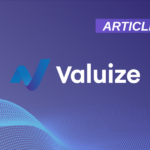In today’s hyper-competitive market, businesses are constantly seeking ways to differentiate their offerings and deliver maximum value to their customers. Understanding the three levels of a product—core, actual, and augmented—is crucial for marketers, sales teams, and product planners aiming to create a compelling value proposition. While the core product addresses the fundamental need and the actual product provides the tangible goods or services, it’s the augmented product that often sets a brand apart. This article explores how a holistic go-to-market (GTM) approach, including Customer Success, plays a pivotal role in driving customer satisfaction, loyalty, and long-term engagement.
The Three Levels of Product: A Quick Overview
Core Customer Value: This is the most basic level, representing the primary benefit or problem-solving solution that the customer is purchasing. It’s the essence of what the product or service delivers—beyond the physical item itself.
Actual Product: At this level, the core benefit is transformed into a tangible product. This includes aspects like design, quality, brand, and packaging. It’s what the customer physically interacts with or experiences.
Augmented Product: The augmented product goes beyond the actual product by adding additional services and benefits that enhance the customer’s overall experience. This could include customer support, warranties, delivery services, and more. It’s where companies can really differentiate themselves and add unique value.
The Role of Go-to-Market in the Augmented Product
A successful GTM strategy integrates marketing, sales, product, and customer success functions to enhance the augmented product. Each of these components contributes to a cohesive customer experience, ensuring that the additional features and benefits designed to set the product apart are well-communicated, understood, and leveraged by the customer.
Proactive Engagement and Value Realization
To proactively engage customers and help them realize the full value of the product, marketing, sales, and Customer Success teams should collaborate closely. Here are some tactical approaches:
- Customer Segmentation and Targeted Communication:
- Segment customers based on usage patterns, industry, or specific needs, and tailor communication to each segment.
- Use marketing automation tools to deliver personalized content, such as feature updates, tips, and best practices that align with each customer segment’s goals.
- Onboarding Programs:
- Develop comprehensive onboarding programs that include welcome emails, instructional videos, guided product tours, and live training sessions.
- Incorporate interactive elements such as quizzes or hands-on tasks to ensure users are actively engaging and learning.
- Regular Check-ins and Business Reviews:
- Schedule regular check-ins with customers to review their progress, address challenges, and offer strategic advice on how to optimize their use of the product.
- Conduct quarterly business reviews (QBRs) to assess the customer’s success metrics, discuss upcoming needs, and align on future goals. Use these sessions to demonstrate how your augmented product can support their evolving needs.
- Value-Based Content Creation:
- Develop content that emphasizes the practical application of key features, such as case studies, success stories, and ROI calculators. Ensure these materials are easily accessible through your website, customer portals, and email campaigns.
- Customer Communities and Peer Learning:
- Create customer communities or forums where users can share tips, ask questions, and learn from each other’s experiences.
- Host virtual meetups, webinars, or user groups that focus on specific features or use cases, encouraging customers to engage with peers and discover new ways to leverage your product.
Building Trust and Long-term Relationships
Building trust and fostering long-term relationships require consistent, value-driven interactions across all customer touchpoints. Here are some tactical strategies to achieve this:
- Personalized Engagement:
- Use data analytics to understand each customer’s journey and tailor interactions accordingly. Personalize communications based on their product usage, past interactions, and stated goals.
- Develop customer personas and journey maps to identify opportunities for personalized engagement at every stage of the customer lifecycle.
- Proactive Issue Resolution:
- Implement monitoring systems that detect early signs of customer dissatisfaction, such as decreased usage or negative feedback, and trigger proactive outreach to address concerns before they escalate.
- Equip Customer Success teams with the tools and authority to resolve issues quickly, whether through technical support, additional training, or adjustments to the service level.
- Consistent Communication:
- Establish a communication cadence that keeps customers informed and engaged without overwhelming them. This can include regular newsletters, product update emails, and personalized outreach.
- Use multi-channel communication, including emails, in-app messages, phone calls, and social media, to reach customers in the ways they prefer.
- Advisory Services:
- Position Customer Success teams as strategic advisors who provide value beyond basic product support. Offer consulting sessions on industry best practices, optimization strategies, and aligning the product with the customer’s broader business objectives.
- Recognition and Rewards:
- Recognize and reward customers for their loyalty and success, whether through customer awards, spotlight features in marketing materials, or exclusive access to beta features and events.
- Implement loyalty programs or tiered support models that provide additional perks or enhanced service levels to long-term customers.
Personalized Support and Problem Solving
Providing exceptional, personalized support that goes beyond standard service is essential for enhancing the augmented product experience. Here are tactical steps to implement personalized support:
- Customer Data Utilization:
- Leverage customer data from CRM systems to understand each customer’s history, preferences, and pain points. Use this information to tailor support interactions and recommendations.
- Implement predictive analytics to anticipate potential issues based on usage patterns and proactively offer solutions.
- Customized Solutions and Offers:
- Develop a system for rapidly creating and delivering tailored solutions, whether through custom product configurations, feature recommendations, or bespoke training sessions.
- Offer customized pricing models or add-on services that align with the specific needs and budgets of different customer segments.
- Dedicated Support Teams:
- Assign dedicated Customer Success Managers (CSMs) or support teams to high-value accounts, ensuring a consistent and familiar point of contact.
- Implement account-based support strategies where CSMs develop in-depth knowledge of the customer’s business, enabling more relevant and impactful support.
- Multi-Channel Support Accessibility:
- Provide support through various channels, including email, chat, phone, and self-service portals. Ensure that customers can easily access support in their preferred way and that all channels are integrated for a seamless experience.
- Utilize AI-driven chatbots for 24/7 support, capable of handling routine inquiries and escalating complex issues to human agents.
- Training and Resources:
- Develop a library of resources, such as video tutorials, FAQs, and troubleshooting guides, tailored to different user roles and needs.
- Offer live training sessions or workshops that focus on advanced features or specific industry applications, helping customers deepen their expertise and confidence in using the product.
Driving Product Adoption and Engagement
To drive product adoption and ensure customers are effectively using all available features, GTM teams need to take proactive and data-driven actions:
- Adoption Campaigns:
- Create targeted campaigns that highlight underutilized features, using customer data to identify which segments are most likely to benefit from each feature.
- Use email marketing, in-app notifications, and personalized outreach to drive awareness and engagement with these features.
- In-App Guidance and Nudges:
- Implement in-app guidance tools, such as tooltips, interactive walkthroughs, and pop-ups, to guide users through new or complex features as they navigate the product.
- Use behavioral nudges, such as reminders or prompts, to encourage users to explore and use key features that are relevant to their goals.
- Gamification:
- Introduce gamification elements, such as badges, progress bars, and achievement rewards, to motivate users to explore and adopt new features.
- Host challenges or contests that incentivize users to engage with specific aspects of the product, driving deeper adoption.
- User Analytics and Dashboards:
- Provide customers with dashboards that offer insights into their usage patterns, highlighting areas where they could achieve more value by adopting additional features.
- Use these insights in customer check-ins to provide specific, actionable recommendations that align with the customer’s business objectives.
- Feature Launch Plans:
- For major feature launches, develop comprehensive rollout plans that include teaser campaigns, beta testing opportunities, detailed training sessions, and follow-up support to ensure successful adoption.
- Engage sales teams to incorporate new features into their pitches and align marketing efforts to spotlight these features in external communications.
Feedback Loop for Continuous Improvement
Establishing a strong feedback loop is critical for aligning product development with customer needs and driving continuous improvement (Onesi) (Majava). Here’s how to build and leverage a feedback loop effectively:
- Systematic Feedback Collection:
- Use a variety of channels to collect feedback, including surveys, NPS scores, in-app feedback buttons, and direct input from customer interactions.
- Implement a structured process for capturing and categorizing feedback to ensure that all relevant insights are documented and accessible to product teams.
- Customer Advisory Boards and Focus Groups:
- Establish customer advisory boards or focus groups that meet regularly to discuss product enhancements, provide feedback on new features, and share their evolving needs.
- Use these forums not only to gather insights but also to validate potential product changes and gather pre-launch feedback on new developments.
- Feedback Integration into Roadmaps:
- Create clear processes for integrating customer feedback into product roadmaps. Regularly review feedback with product teams and prioritize changes that align with strategic goals and customer demand.
- Communicate feedback-driven changes to customers, demonstrating that their input directly influences product development and improvements.
- Closing the Loop:
- Always close the feedback loop by informing customers of the actions taken in response to their feedback. This can be done through release notes, personalized emails, or community announcements.
- Highlight stories of how customer feedback has shaped the product, showcasing your commitment to listening and responding to user needs.
- Continuous Monitoring and Iteration:
- Use analytics to continuously monitor how changes are impacting customer satisfaction and product usage. Be prepared to iterate and refine based on ongoing feedback and performance data.
- Regularly review and adjust GTM strategies to align with evolving customer needs, ensuring that your product remains relevant and valuable over time.
Product Differentiation: Stand Out From the Crowd with a Comprehensive GTM Approach
Product differentiation is a vital benefit of augmented products, offering businesses a competitive edge by providing unique additional benefits that distinguish them from competitors. In a comprehensive GTM approach, this differentiation extends beyond the product itself to include the entire customer experience.
GTM as a Differentiator
GTM teams play a key role in product differentiation by actively engaging with customers to highlight the augmented aspects of a product, such as unique features, exclusive services, or enhanced support. By demonstrating the full range of benefits available, GTM teams help build a stronger connection between the customer and the brand.
For example, a SaaS company offering advanced analytics software might include personalized onboarding sessions, data integration assistance, and ongoing performance reviews as augmented benefits. Marketing promotes these benefits, sales aligns them with customer needs, and Customer Success ensures that customers are aware of and utilize these services effectively. This proactive engagement creates a seamless and highly valued experience, driving customer satisfaction, adoption, and long-term loyalty.
Successful Examples of Augmented Products Enhanced by GTM Strategies in B2B Enterprise Companies
Several B2B enterprise companies have successfully employed product augmentation strategies to differentiate their offerings, and a robust GTM approach has been a critical factor in ensuring these strategies resonate with customers:
Salesforce: Salesforce’s ecosystem, including products like Sales Cloud, Service Cloud, and the AppExchange marketplace, exemplifies a comprehensive augmented product strategy. Through an integrated GTM approach, Salesforce ensures customers can easily navigate these offerings and fully leverage the platform’s capabilities. Their Customer Success teams provide tailored onboarding, ongoing training, and strategic advisory services, which enhance the augmented product experience and drive customer satisfaction and loyalty.
Microsoft Azure: Microsoft Azure offers a wide range of cloud services, including computing, analytics, storage, and networking. Their GTM strategy encompasses a robust support network, including personalized Customer Success management, extensive documentation, and developer communities. By offering training, certification programs, and a dedicated support team, Microsoft ensures that customers can fully utilize Azure’s features, creating a seamless and highly valuable experience that differentiates Azure from other cloud providers.
SAP: SAP provides enterprise software solutions that help businesses manage their operations. Through a well-rounded GTM strategy, including Customer Success, marketing, and sales, SAP augments its core software offerings with services such as implementation support, dedicated account managers, and continuous learning opportunities through the SAP Learning Hub. These augmented services ensure that customers can effectively deploy and optimize SAP solutions, driving higher engagement, satisfaction, and long-term commitment.
ServiceNow: ServiceNow’s platform for digital workflows extends beyond its core IT Service Management capabilities through a variety of augmented services such as Customer Success managers, product training, and a rich ecosystem of integrations and apps. Their GTM strategy ensures customers are fully supported in their journey, with proactive engagement and tailored solutions that help companies maximize the value of their investment in ServiceNow’s platform.
GTM Strategies: The Key to Unlocking Augmented Product Potential
GTM strategies, including Customer Success, are not just add-ons; they are the engines that drive the augmented product’s value. By focusing on ensuring that customers fully realize and utilize the augmented aspects of a product, GTM teams help create a differentiated, compelling experience that extends beyond the core and actual product. This strategic alignment ensures that companies not only attract new customers but also retain and grow their existing customer base by continually enhancing the perceived value of their offerings.
Key Takeaways:
- Proactive Communication: GTM teams proactively inform customers about augmented benefits, ensuring they are fully utilized.
- Personalization: Personalized support and engagement make augmented features feel more relevant and valuable to the customer.
- Customer Education: By educating customers on how to best use augmented features, GTM teams enhance satisfaction and drive loyalty.
- Feedback Integration: GTM teams play a vital role in gathering feedback on augmented products, driving continuous improvement and further differentiation.
In conclusion, a holistic GTM strategy, inclusive of Customer Success, is a crucial component of the augmented product strategy. It ensures that the additional benefits designed to set a product apart are not just available but are effectively delivered, understood, and appreciated by the customer. This alignment of GTM strategies with product differentiation efforts not only enhances the customer experience but also strengthens the overall value proposition, making augmented products a powerful tool for achieving competitive advantage.
Works Cited
Majava, Jukka. “Customer Needs in Market-Driven Product Development: Product Management and R&D Standpoints.” Scientific Research Publishing, https://www.scirp.org/journal/paperinformation?paperid=42663. Accessed 11 September 2024.
Onesi, Oseremi. “Agile product management as a catalyst for technological innovation.” Orion Scholar Journals Publication, 5 April 2024, https://orionjournals.com/ijsru/sites/default/files/IJSRU-2024-0033.pdf. Accessed 11 September 2024.






